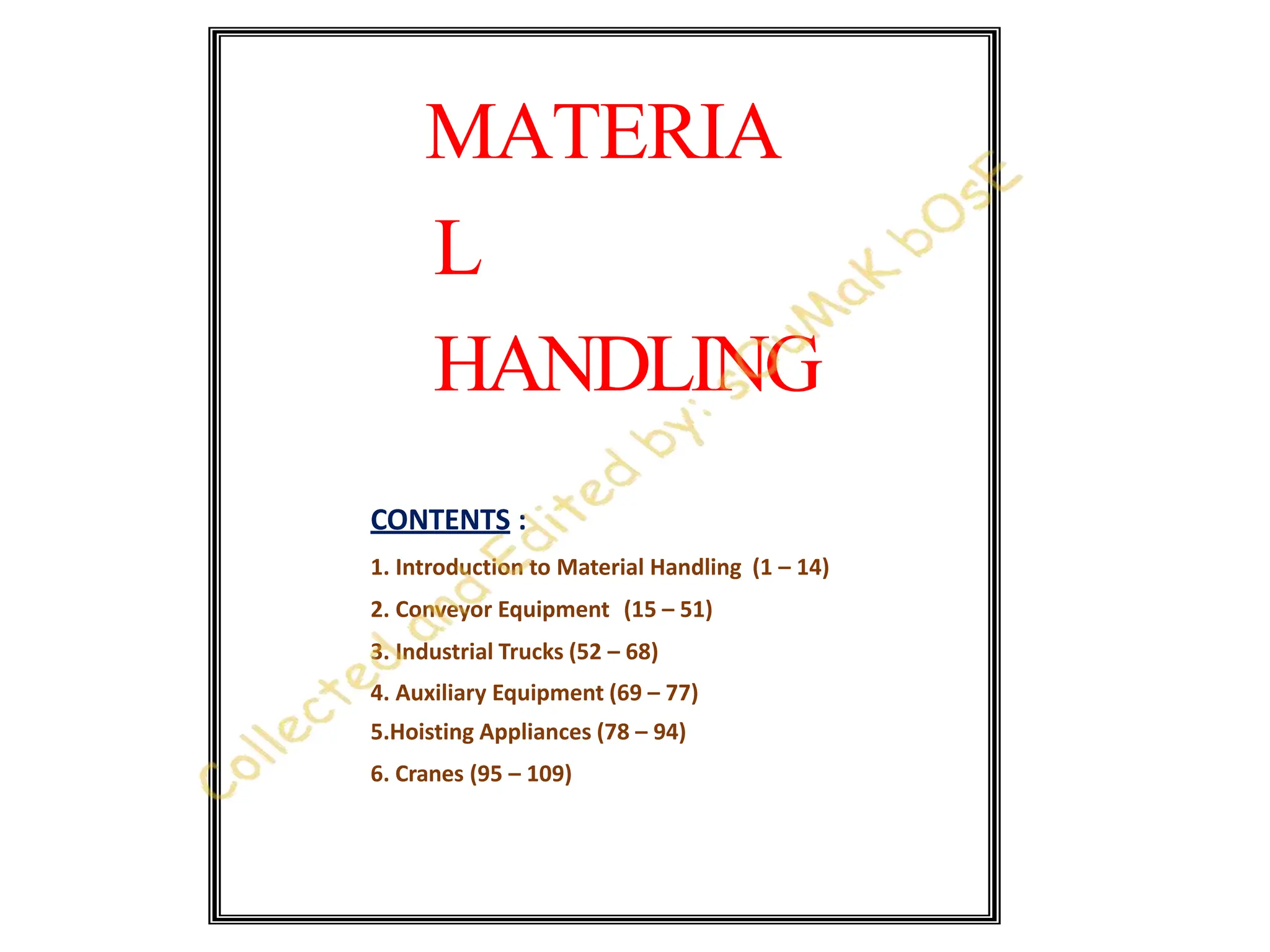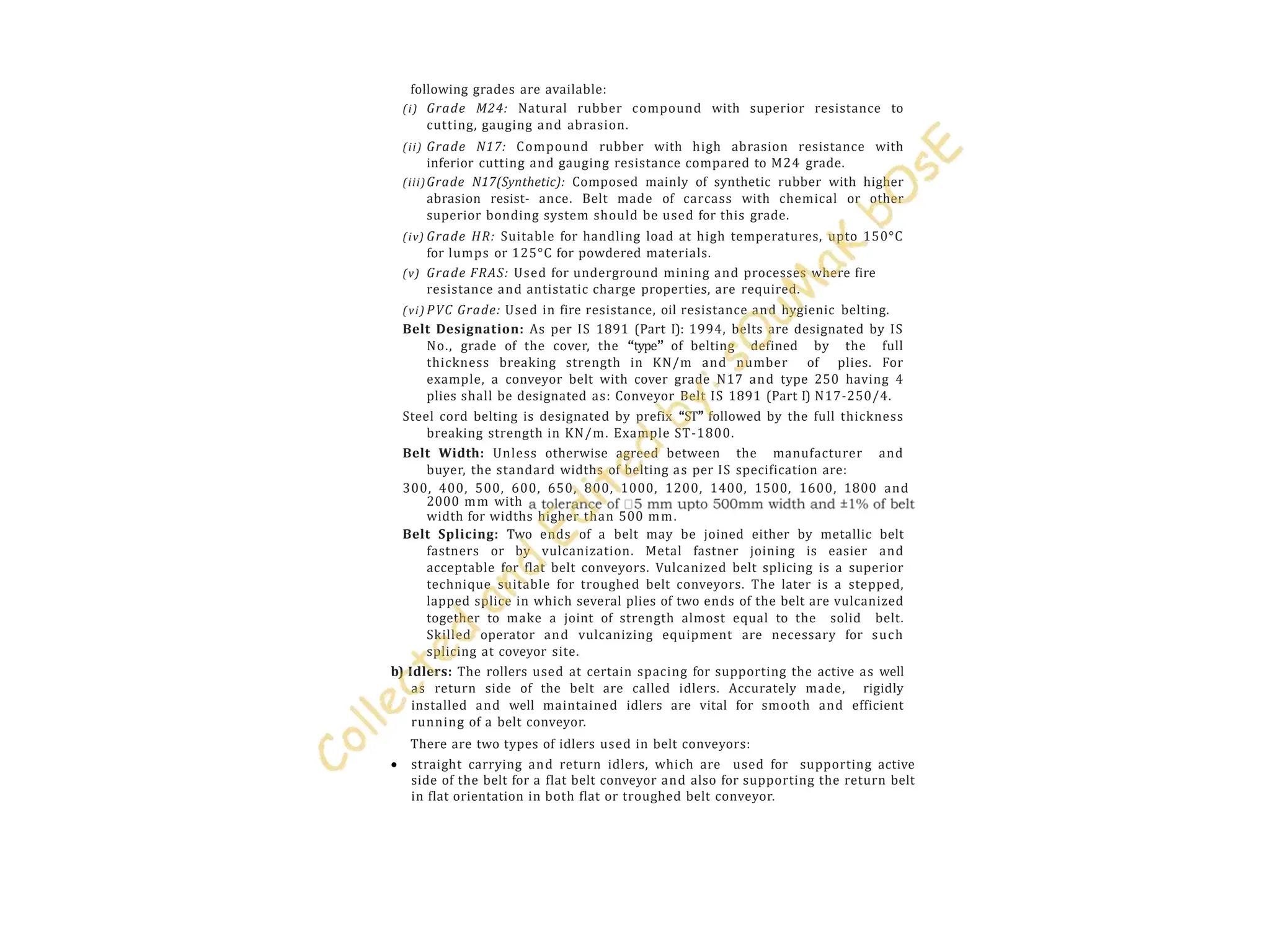This document provides an introduction to material handling. It includes an overview of the course objectives, syllabus, and learning outcomes. Key concepts covered include the definition of material handling, objectives of material handling systems, principles of material handling, selection of material handling equipment, classification of material handling equipment, and characteristics and classification of materials. The document provides detailed information on the concepts and considerations for designing effective material handling systems.
























![layout to follow combined horizontal and inclined move- ment in the same
vertical plane.
Apron/pan design: Depending on the nature of materials to be conveyed,
different designs of apron and pan are used. Some of the common designs are:
(i) Flat, spaced apron: Conveyor with rectangular shaped flat steel or
wooden slat aprons with small gaps between them, providing a flat
surface for carrying unit loads are specifi- cally called ‘‘slat conveyor’’
[Fig. (a)]. Some other designs of flat and spaced aprons with cleats for
carrying different shaped object are shown in Fig. (b) and (c).
Slat Conveyor (b) (c)
Fig. Flat spaced apron conveyor
(ii) Corrugated apron: These are the most common type of apron, made of
formed steel, with front and rear edges beaded so that one overlaps the
other to form a continuous bed or trough. The overlaps are so made
that during turning of the chain over sprockets, the apron ends move
relative to each other without creating a gap for leakage of materials or
a jam- ming of adjoining aprons or pans. Some of the aprons are plain
while some are provided with overlapped vertical end plates to form
pans. Corrugated aprons or pans may be fabricated or cast from gray
or malleable iron. The pans are designated as leakproof (for carrying
fines), shallow, deep and hinged (for carrying chips, trimmings, scrap
etc.). Deep pans may be used for carrying materials at an inclination of
upto 45°.
(iii)Special types: These are used in special applications and are too
numerous to be discussed in limited space. Some of the typical
examples are the four compartment cast-metal pans used for pig
casting. Beaded aprons are used in sugar mills. When deep loads are
carried on an apron conveyor, stationary side plates called skirt plates
are provided on both sides, fixed to the conveyor frame.](https://image.slidesharecdn.com/material-handling-240209064309-f3f50379/75/Material-Handling-pptx-25-2048.jpg)




















































































